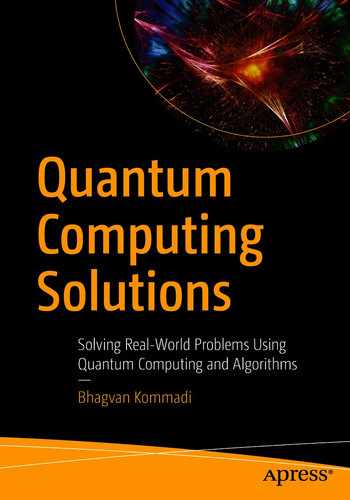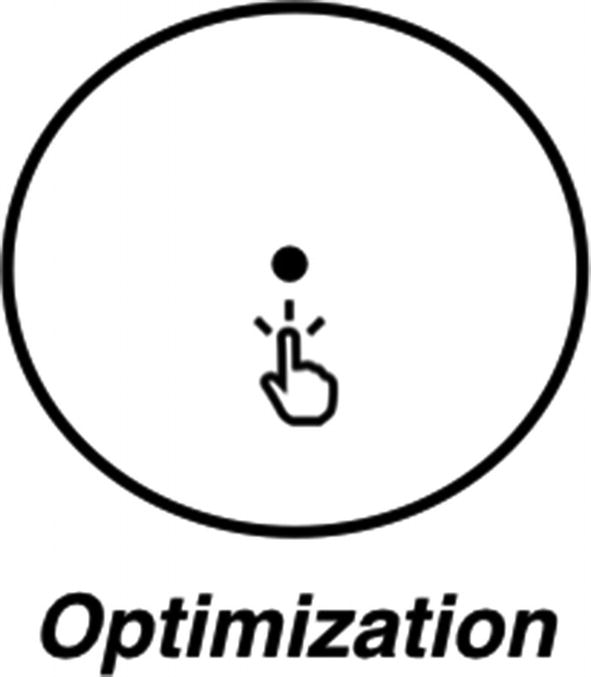Introduction
Quantum computation is...a distinctively new way of harnessing nature.... It will be the first technology that allows useful tasks to be performed in collaboration between parallel universes.
—David Deutsch
This chapter gives an overview of quantum solutions. You will see how quantum computing can be applied in real life. The problem and solutions are presented with the solution benefits. The solution benefits are automation, cost reduction and profit improvements, efficiency improvement, and defect reduction.
The solutions covered in this chapter are related to cryptography, optimization, and cybersecurity.
Let’s start by looking at the history of quantum computing and key achievements so far.

Quantum computing time graph
He came up with new concepts related to quantum physical processes in 1980. He proposed that quantum states are represented by binary numbers.
David Deutsch came up with a concept called universal quantum computers in 1985. A universal quantum computer is based on the two-state system, which consists of a set of quantum gates. Quantum gates are a set of basic operations.
Peter Shor invented the quantum entanglement–based method for prime number factorization in 1994. This method is used to identify the prime factors of big numbers. The efficiency of the algorithm was much better compared to the previous methods. This research helped in creating research interest at other universities.
The trapped ion concept was first developed by the National Institute of Standards and Technology (NIST) and the California Institute of Technology in 1995. The concept is related to the ions that are trapped, and the temperature is decreased to a quantum state. In 1996 Bell Laboratories scientist Loy Grover developed Grover’s algorithm, which is related to searching using quantum algorithms. A research team consisting of members from the University of California, Massachusetts Institute of Technology (MIT), Harvard University, and IBM invented a nuclear magnetic-resonance technology to modify quantum information in a liquid state.
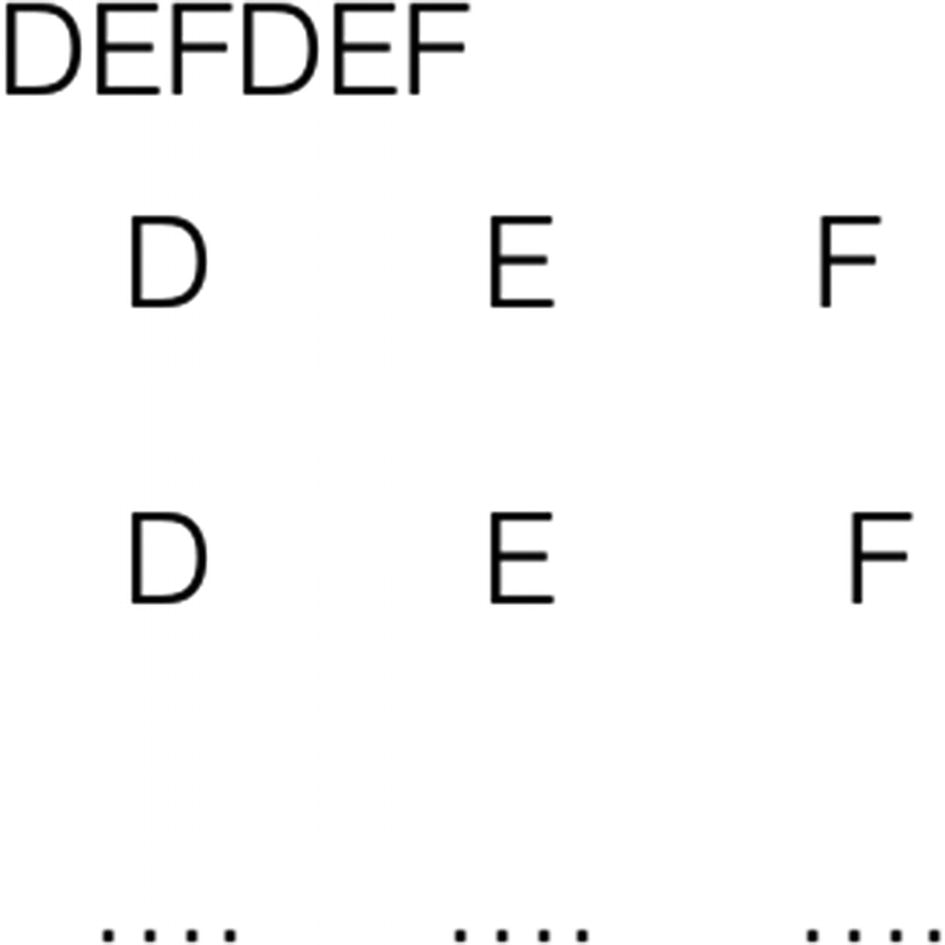
Chain molecule structure
A quantum computer consists of well-characterized quantum bits, and it is a scalable physical system.
It needs to have the capability to create a set of quantum bits.
A quantum computer can set the initial state of the quantum bits. This is similar to a reset button on a desktop computer.
A quantum computer has long decoherence times.
Quantum computer has error correction related to the data retention in memory.
A quantum computer is based on a universal set of quantum gates. Quantum algorithms need to be executed on the computers. These algorithms might involve the rotation of quantum bits on a Bloch sphere and the entanglement of qubits.
It needs to have a measurement feature related to the state of quantum bits.
A quantum computer needs to have the capability to interchange the static and dynamic quantum bits.
Information needs to be transferred along large distances. Quantum bits need to be transmitted between the source and destination.
The information needs to be retained in quantum bits after transmission.
After DiVincenzo, Van Meter presented his thesis for building a quantum computer. The technology evolved from Van Meter’s thesis to a physical quantum computer. D-Wave came up with its own quantum computer. The latest update is that IBM is building a 53 quantum bit quantum computer. Google already has a 72 quantum bit quantum computer. The IBM Quantum computer will be accessible through its IBM Bluemix cloud environment.
Real-Life Problems and Solutions
Quantum solutions are related to building quantum algorithms for improving computational tasks within quantum computing, artificial intelligence, data science, and machine learning. Quantum solutions are picking up speed compared to quantum computer innovations. In this chapter, we look at various solutions such as optimization problems, quantum cryptography, and cybersecurity. This chapter explains the quantum solutions involving AI algorithms and applications in different areas. The other chapters of this book will present code samples. They will be based on real-life problems such as risk assessment and fraud detection in banking. In pharma, we look at drug discovery and protein folding solutions. Supply chain optimization and purchasing solutions are presented in the manufacturing domain. In the utility industry, energy distribution and optimization problems are explained in detail with solutions. Advertising scheduling and revenue optimization solutions are covered in the media and technology verticals.
The areas in which quantum machine learning are being applied are nanoparticles, material discovery, chemical design, drug design, pattern recognition, and classification. The applicable use cases are creating new materials that can be applied in space tech, wearable tech, renewable energy, nanotech, new drugs and chemical combinations, genetic science, biometrics, IoT devices, and universe discovery.
Rose’s law states that the computational power of quantum computers doubles every 12 months, as opposed to the 18 months doubling of Moore’s law.
“Quantum computers have the potential to solve problems that would take a classical computer longer than the age of the universe.”
—David Deutsch, Oxford University professor
Barclays, Goldman Sachs, and other financial firms are investigating the potential use of quantum computing in areas such as portfolio optimization, asset pricing, capital project budgeting, and data security. In aerospace, Airbus is exploring applications in communications and cryptography.
Lockheed Martin is investigating applications of verifying and validating complex systems. The US Navy has plans to develop algorithms for optimization problems such as data storage and energy-efficient data retrieval with underwater autonomous robots. NASA is exploring applications in communications, distributed navigation, and system diagnostics. Technology players such as Alibaba, Google, and IBM are working on applications such as hack-resistant cryptography, software debugging, and machine learning. Life sciences firms are seeking applications of quantum computing in personalized medicine and drug discovery.
- Economy and finance (see Figure 1-3)
 Figure 1-3
Figure 1-3Stock market
Analysis and simulation of stock portfolios for investment decisions
More effective fraud detection and risk optimization in real time
- Medicine (see Figure 1-4)
 Figure 1-4
Figure 1-4Medical sciences
Research and development of medical sciences (e.g., analysis of DNA sequences that are usually large)
Bioengineering and telemedicine relying on heavy image processing and analysis
Faster and more accurate diagnosis of critical diseases such as cancer
Drug discovery and production at scale
- Natural sciences (see Figure 1-5)
 Figure 1-5
Figure 1-5Natural sciences
Forecasting and time-series analysis
Plant genome analysis
Agricultural and planting applications
- Information technology (see Figure 1-6)
 Figure 1-6
Figure 1-6Information technology
Data searches and analysis of big data warehouses
Software tests and simulations that are too complex and time-consuming for current computers
Supply chain and procurement (scenario analysis and decision-making with regard to space and cost efficiency, distribution channels, transportation optimization, etc.)
Asset and resource management (probabilistic modeling for cost savings and lifecycle management)
Analytical capabilities in general, which leads to more insightful decision-making process
Solution Benefits
Quantum solution infrastructure typically offers a high degree of automation and delivers significantly improved performance and resilience. A platform powered by a quantum computing framework evolves through continuous learning and deep learning. During the evolution, the system becomes a self-reliant and self-sustained platform. The platform will be able to make critical decisions.
This new paradigm of computing will change the way software is written. The framework evolved from basic programming software to patterns and models. This paradigm will change the deployment and management of the applications. These solutions are based on deep learning–based frameworks, quantum computing platforms, and a new set of tools. These quantum solution frameworks will enable organizations to create, test, and deploy new applications without any human touch points. The development cycle will help in rebuilding the software with deep learning and quantum computing algorithms.
The infrastructure for a quantum solution needs to be highly scalable. The quantum solutions platform requires the high-performance computing power to be able to process data loads and guarantee service assurance and performance. Current applications lack performance and service levels on a millisecond basis and millions of cycles per second. High-quality quantum solutions will be built with quantum algorithms and quantum AI techniques. New quantum solutions infrastructure will use the GPU-level computing power blended with quantum computing. This infrastructure will leverage open source software and the cloud for elastic capacity demand.
The quantum cloud consists of quantum simulators and processing applications. Quantum cloud services are provided by IBM, Google, Rigetti, and Microsoft for information processing.
Quantum solutions infrastructure will be IoT enabled. Data connectivity and real-time insight are important factors for real-time quantum solutions. This solution infrastructure will have features to secure data transfer, ingestion, and data processing. The data will be acquired from various data sources to create real-time insights. IoT solution deployments will have all connected devices. A policy and governance framework will be part of quantum solutions.
Quantum solution infrastructure needs to be secure. Enterprises will have quantum solutions that involve cybersecurity for the infrastructure. The servers need to be monitored, and the security data needs to be ingested, integrated, and stored for analysis. The security and monitoring events need to be filtered using unsupervised learning. The threat intelligence model is built and has people, places, and applications deployed on the server. Prevention of the threats is possible through an event dashboard.
Automating Manual and Semi-manual Processes
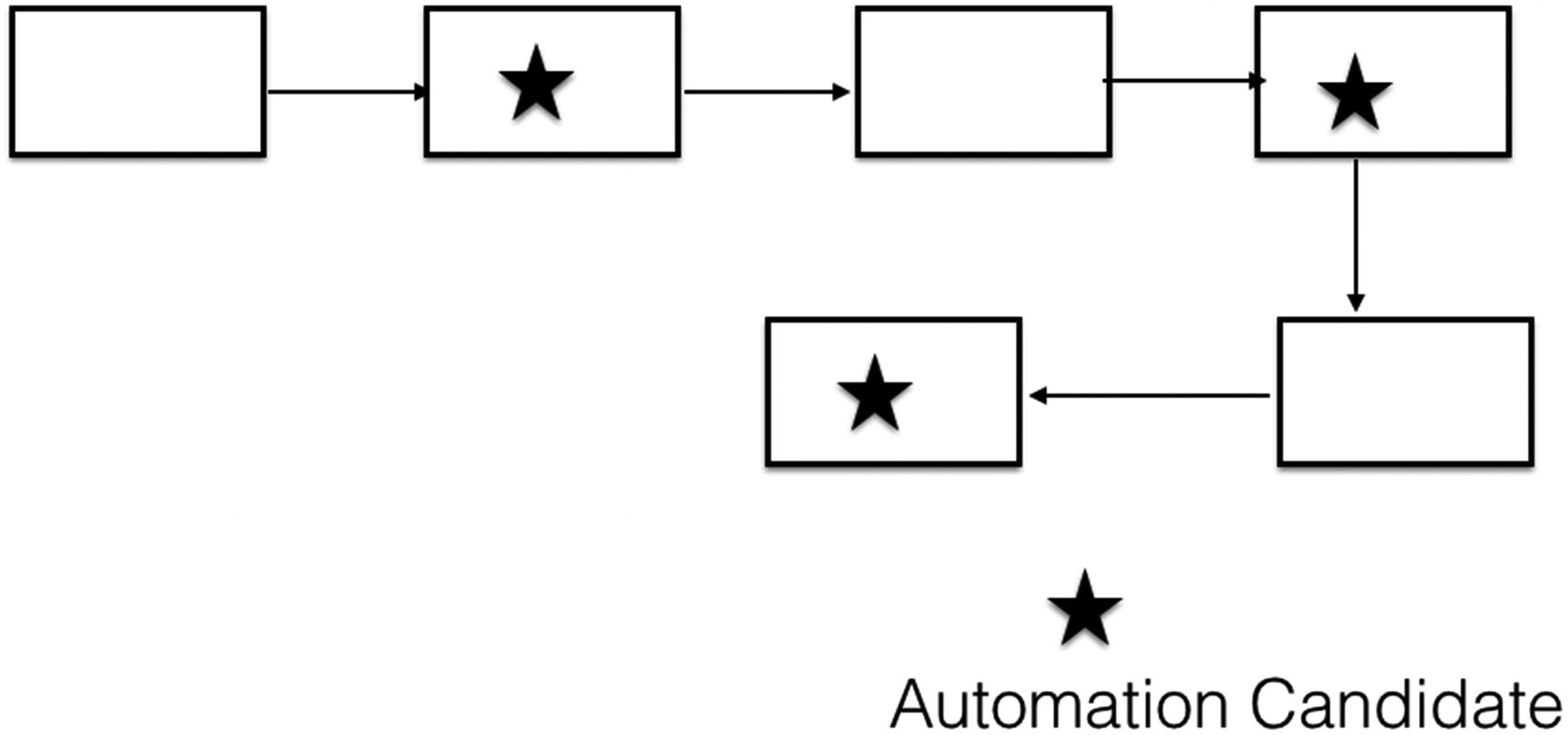
Process Automation
Handling big data is the biggest automation effort that quantum solutions can provide with their high-performant data processing capabilities. Human errors and problems arise when adding automation to the business processes. Predictive and prescriptive analytics are solutions that can add value to the enterprise business’s decision-making.
The data comes from the different servers, applications, devices, and departments in a business organization. The data needs to be stored, cleaned, and analyzed for actionable decisions. Quantum solutions help in handling big data and creating dashboards and reports.
Reducing Costs and Improving Profits
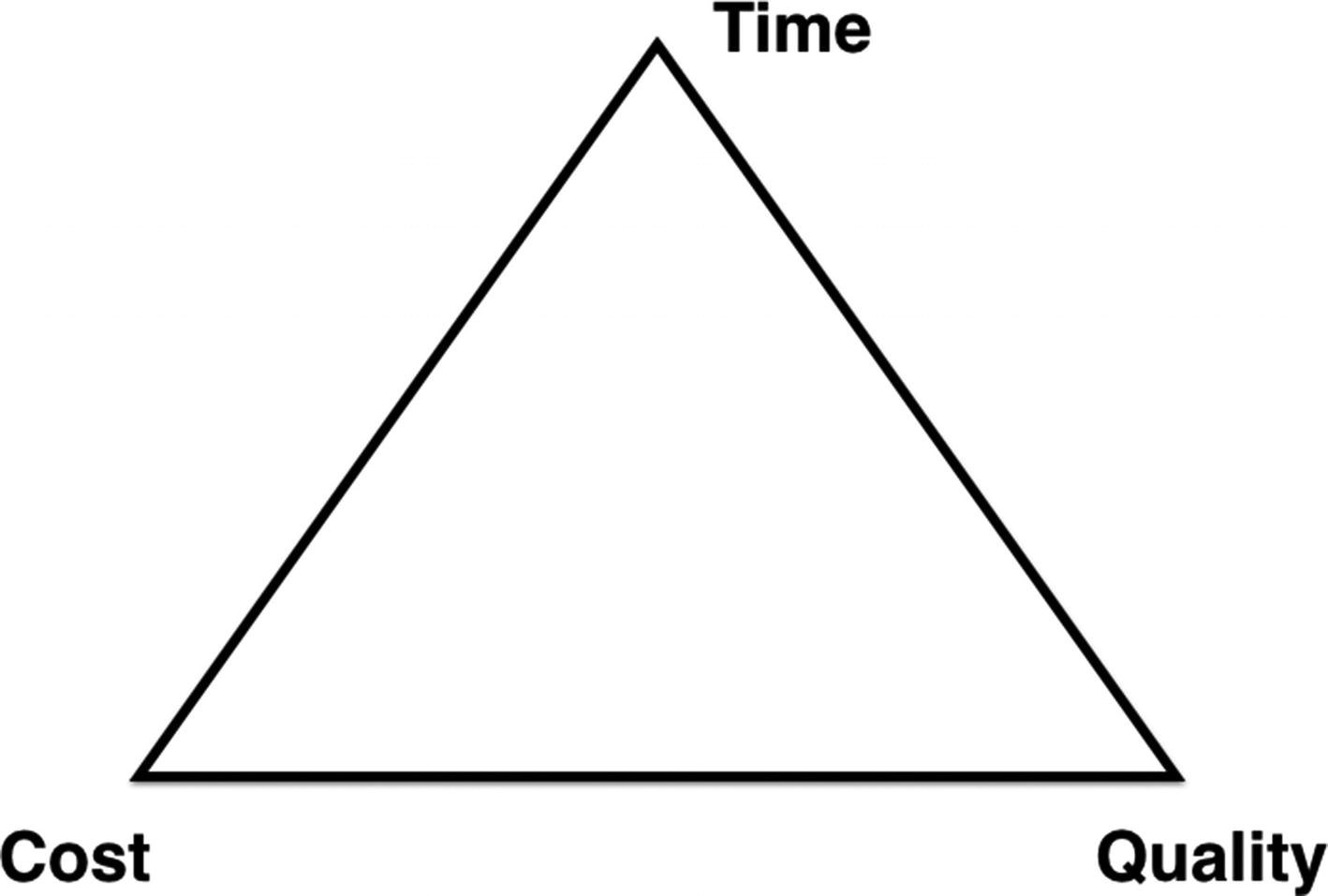
Triangle showing the IT challenges
Many enterprises have challenges related to resources dedicated to the maintenance of the applications (80 percent of them). The operating costs of the deployed solutions are twice the solution development or package software cost. The developer resource costs are more than the software servers’ cost by a ratio of 18:1. Banks are spending about a billion dollars per year to maintain their applications and solutions that are up and running 24 hours every day of the week. This amounts to the total cost of ownership and challenges for maintaining IT in a bank.
The other challenges are related to legacy apps and products, outdated technology platforms, and not having skilled resources in the IT departments. Time to market is an important factor in every aspect of the business. Technology platforms do not have the capabilities to match the speed expected in terms of time to market. The volume and complexity of change or requirements do not match the resources available in the enterprise.
Having effective solutions is important to handle this exponential increase in the cost of maintaining the deployed solutions. Quantum solutions solve this problem by cutting the resources required by offering an exponential speedup in the algorithms.

Data management process
Quantum solution infrastructure will have data models, patterns, and algorithms to process data quickly. First, The data can be from various sources, and processing power helps in creating reports. Decision-making will be faster using the reports and dashboards. The total cost of ownership will go down for an enterprise.
Second, this complexity is a significant limiting factor for executing product development at the speed necessary to respond to market needs. In the absence of careful planning, technology platforms will fail to anticipate the complexity of interactions. Managing volume and complexity falls to a highly skilled human workforce, the demand for which is already far outstripping supply.
Without effective solutions, the cost of maintaining applications will, therefore, increase exponentially. Furthermore, increasing complexity means a greater risk of security loopholes, making organizations more vulnerable to threats.
Improving Efficiencies and Reducing the Defects

Solution development process
Solutions
In this section, we look at different quantum solutions in the areas of cryptography, optimization, and cybersecurity.
Cryptography
Banks will be interested in protecting their payment gateways and solutions against security threats from future quantum computing capabilities. There is a need to make the payment solutions “quantum-resistant.” In addition, there is a need for blockchain-based banking and financial solutions to improve using post-quantum cryptographic algorithms.
The Quantum Resistant Ledger is the next-generation solution for banking and financial services. Quantum cryptography is based on quantum key distribution. Quantum key distribution is related to the expansion of a short, shared key into an infinite shared stream. This demands improvement in the efficiency of post-quantum cryptographic algorithms.
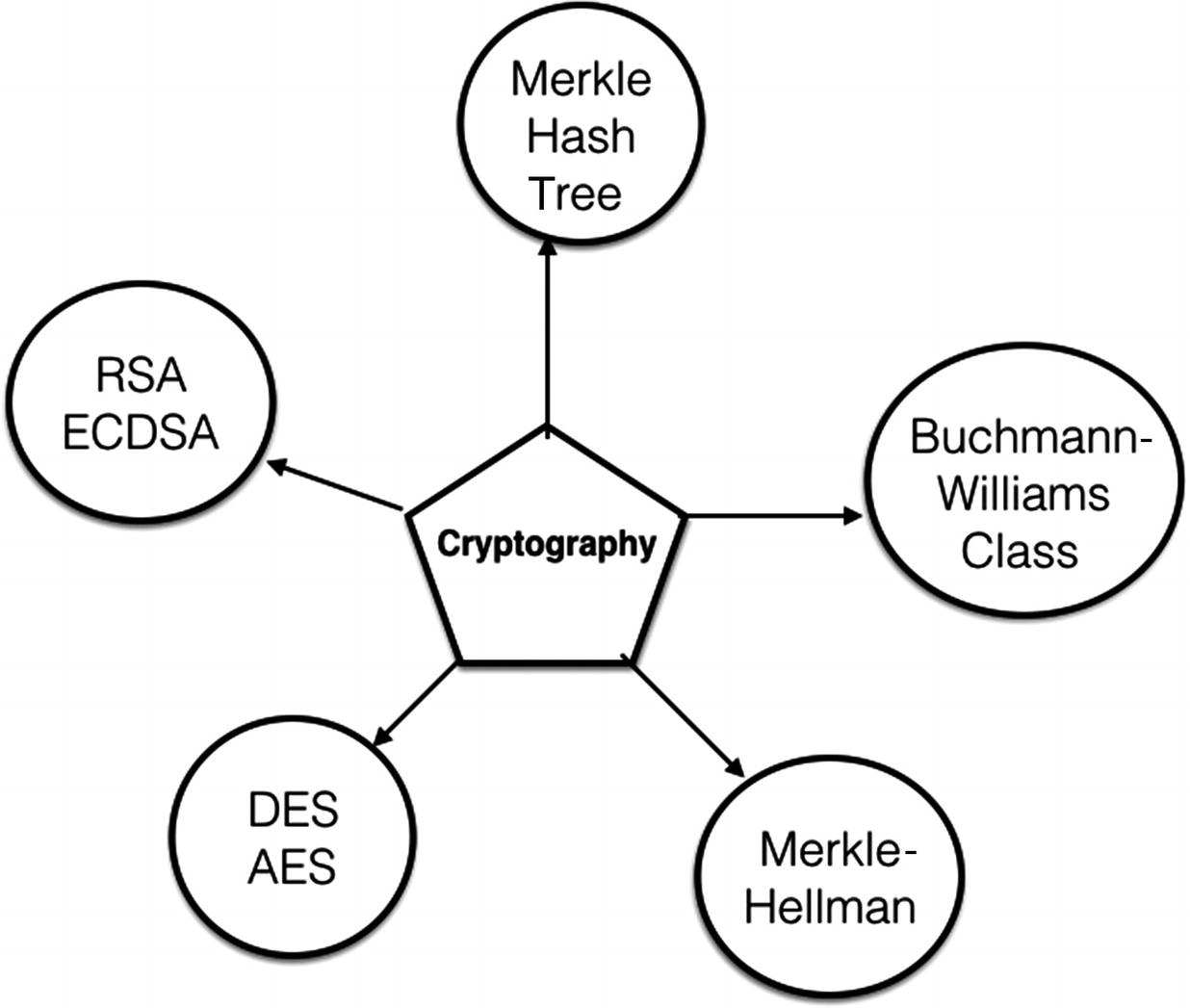
Cryptography models
A quantum computer–based algorithm can break the symmetric key cryptographic algorithm by a factor of the square root of the size of the key. To find an image of a 256-bit hash function, a quantum algorithm will take only 2128 time. Shor’s algorithm helps in the quantum factorization of big numbers. This demands that the security systems be quantum-resistant. Elliptic curve cryptography has been shown to improve the cracking process by 21 percent. This method is based on multiplying polynomials and adding random noise.
Quantum algorithms beat the classical equivalents because they can be executed on faster hardware. Quantum algorithms are also based on quantum mechanics. Theoretically, quantum mechanics methods have proven to be faster than classical methods. Quantum mechanics is related to the complex subatomic particle interaction. The subatomic particles can be electrons. Electrons can be present in multiple discrete states at the same time, which is called superposition .
Heisenberg’s uncertainty principle states that a quantum system has information about an object’s velocity and position. Any measurement of velocity will have an impact on the position because the act of observing modifies the state. The subatomic particles can be in an entangled state. A change to one particle impacts another particle when they are separated from each other. Quantum mechanics captures the complexities of the state of electrons using complex numbers.
Grover’s algorithm can solve a phone book search on the order of the square root of the number of phone book numbers (O(√n) time). Let’s say a phone book has 100 million phone numbers. Grover’s algorithm can find a number with 10,000 steps. Grover’s quantum algorithm uses quantum mechanics–based methods to speed up the search.
Optimization
Optimization problems occur in our daily life in different domains such as finance, banking, healthcare, logistics, and automotive sectors. In wealth management, portfolio selection is based on finding the best assets to balance the risk with the expected gains. A portfolio selection is an NP-hard problem. An NP-hard problem is a difficult and not impossible problem for current computers to solve quickly. Quantum annealing is a quantum algorithm to find solutions for these NP-hard problems.
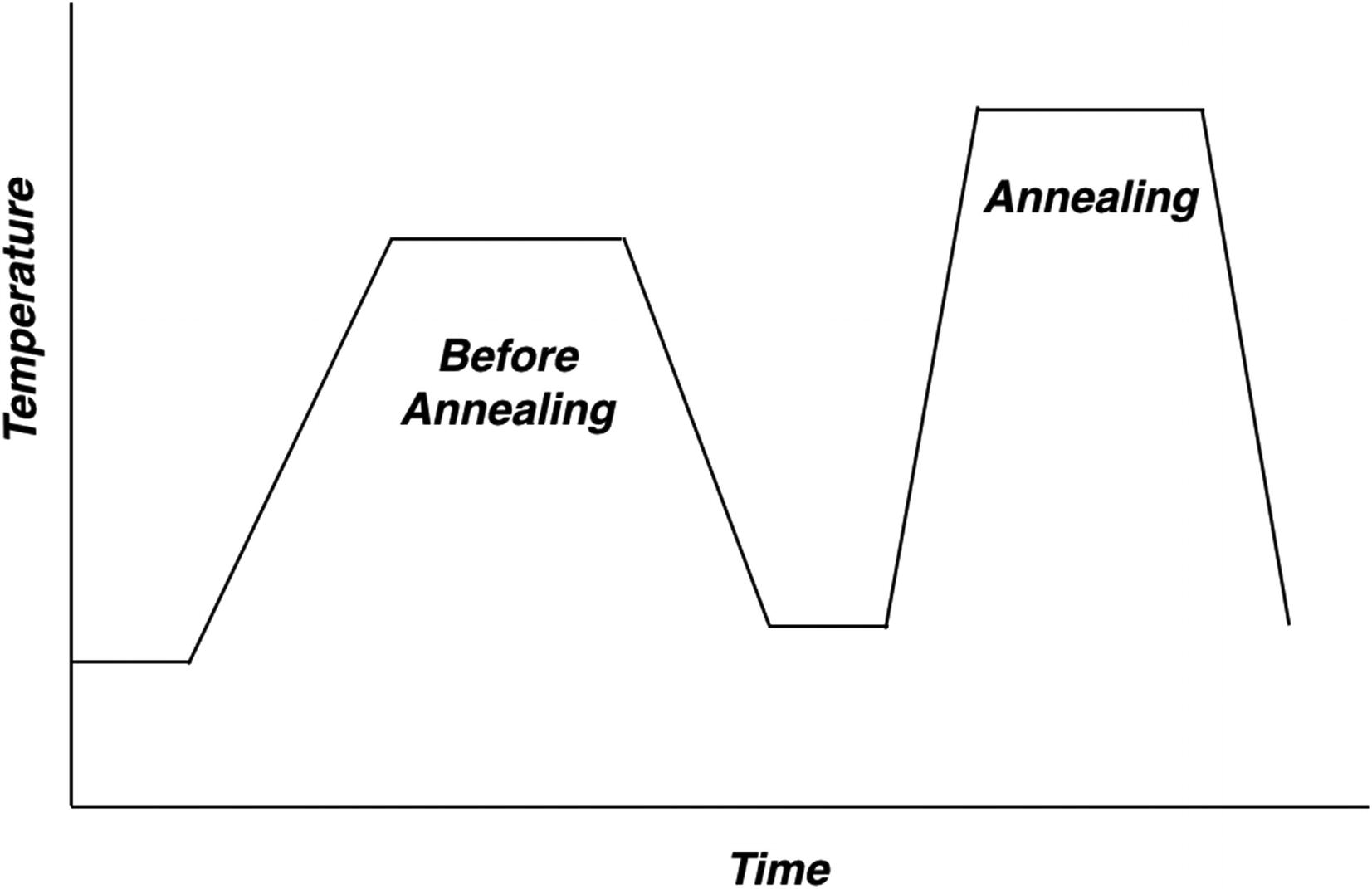
Quantum annealing process
Quantum annealing techniques help in finding optimal trading paths. A large set of trading orders gets executed, and this impacts the asset price. The execution costs need to be accounted for during the trading execution. Algorithms need to set the trading rate for big orders. This helps in balancing the speed of trading, minimizing the exposure to market risk, and minimizing the impact on the market.
The other area is related to optimizing the arbitrage opportunities. Arbitrage is related to making a profit by taking advantage of the difference in asset prices with less risk. The example given is typically related to currency exchange from euros to dollars, dollars to yens, and yens to euros. This transaction might yield a small profit due to the differences in prices. This is called cross-currency arbitrage. This problem is NP-hard to find optimal arbitrage opportunities across the assets in different markets. The quantum annealer method helps in finding the path with the lowest cost.
Credit scoring is another area that can be solved using quantum annealing. Credit scoring of an individual is related to the person’s income, age, financial history, collateral, and current liabilities. The risk assessment looks at various factors in the customer’s profile. This is a computationally challenging problem, which is an NP-hard problem.
The vehicle routing problem is another optimization problem that can be solved using quantum annealing. Dantzig and Ramser proposed in 1959 the vehicle routing problem. The goal for the optimization is to identify the optimal routes for a set of vehicles serving customer orders. The solution is to identify the set of routes that are part of the order delivery from the source to the destination. The number of vehicles needed for customer orders is also an optimization goal. Quantum annealing is the optimization technique used to determine the local minima route over a given set of candidate functions. This is a method of discretizing a function with many local minima to determine the observables of the function. The quantum annealing process is different from simulated annealing, as it is based on the quantum tunneling process. The particles tunnel through energy barriers from a high state to a low state.
Quantum annealing starts from a superposition of different states of a system that are weighted equally. The time-dependent Schrödinger equation drives the time evolution of the system. This system serves to affect the amplitude of all states as the time increases. Eventually, the ground state is reached to give the instantaneous Hamiltonian of the system.
Cybersecurity
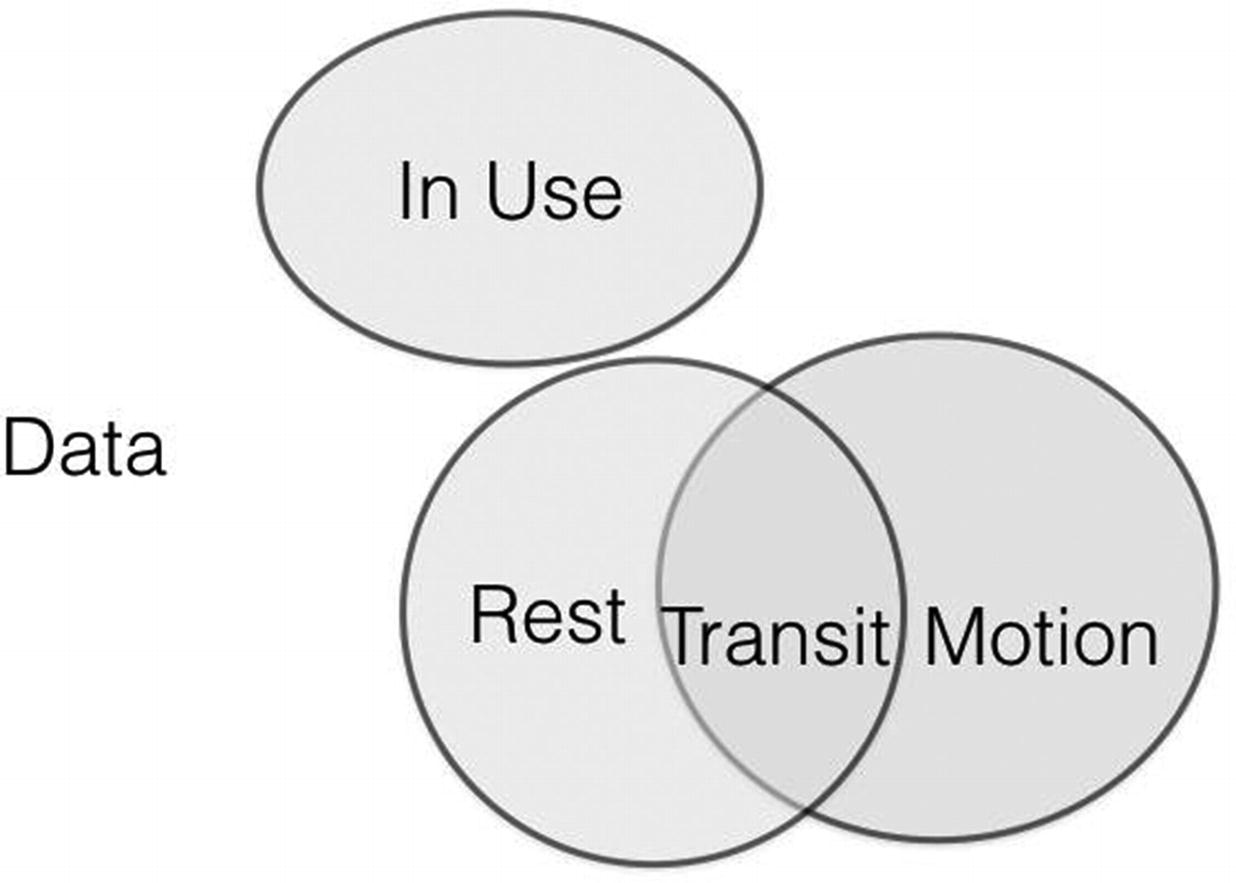
Data in use/rest/transit/motion
Data at rest can be intercepted and misused by an insider and an external hacker. Data in transit can be modified by the hackers for misuse in the networks. Confidential business data and personally identifiable information are the use cases for data in transit. Mission-critical data cannot be secured by using role-based access and controls. Data governance is needed in an enterprise to protect and secure the data.
Cybersecurity solutions are related to encrypt, decrypt, sign, and verify customer transactions and data. A hacker can intercept and steal the secured data. Secured data has information related to the customer’s credit card numbers and Social Security numbers. Using a quantum computer, the hacker has a higher computational power. Quantum algorithms like Shor’s are proven to break the current cryptographic systems. The post-quantum cryptographic designers are improving the efficiency of the new encryption and decryption algorithms. Hybrid systems and high-speed quantum-resistant algorithms are required to strengthen post-quantum cryptography algorithms. McEliece public-key encryption, NTRU public-key encryption, and lattice-based public key encryption systems are proven to be quantum-resistant.
Summary
In this chapter, we looked at different solutions in cryptography, optimization, and cybersecurity and how quantum computing is applied and solutions are developed.
